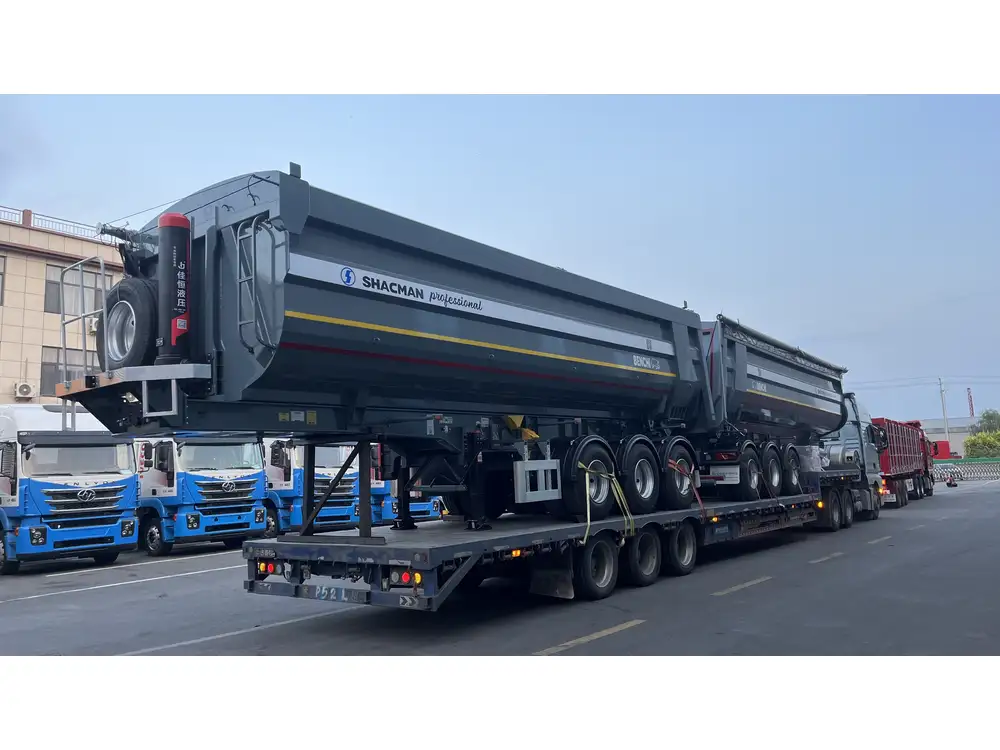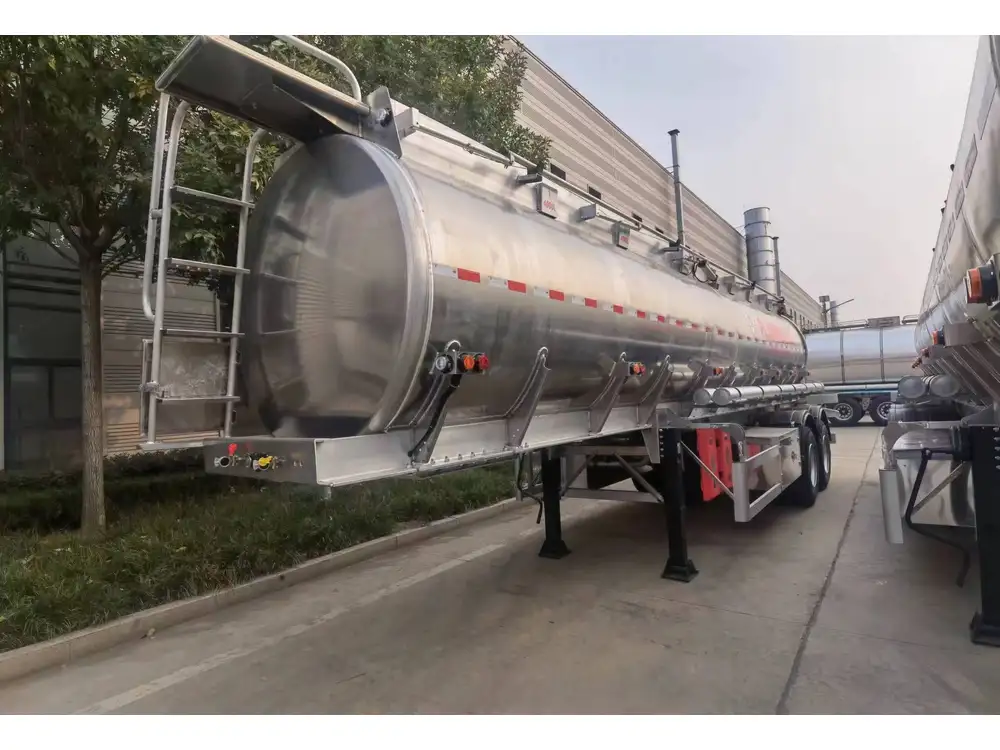When it comes to the world of logistics and transportation, one critical factor that often influences the efficiency of operations is the interior height of semi-trailers. This seemingly straightforward measurement plays an integral role in the types of goods transported, loading procedures, and overall vehicle compliance. With a variety of semi-trailer types available, understanding their interior dimensions can significantly impact loading capacity, ease of access, and compliance with industry regulations.
What is the Average Inside Height of a Semi-Trailer?
Generally speaking, the inside height of a semi-trailer can vary greatly depending on the design and purpose of the trailer. The most common interior heights for standard dry freight semi-trailers fall between 13 feet 6 inches (162 inches) and 14 feet (168 inches). However, specialized trailers, such as those used for transporting taller items or specific commodities, can have varying interiors. For example, high cube semi-trailers may offer an inside height of 13 feet 6 inches to 14 feet 6 inches.
| Trailer Type | Average Inside Height |
|---|---|
| Standard Dry Freight | 13’ 6” to 14’ |
| High Cube Trailers | 13’ 6” to 14’ 6” |
| Flatbed Trailers | 5’ to 8’ |
| Refrigerated Trailers | 8’ to 9’ |
| Lowboy Trailers | 18” to 24” |
Factors Affecting Semi-Trailer Height
Several factors can influence the interior height of semi-trailers beyond just the standard metrics. It’s essential to consider:
Purpose of Transportation: Specialized cargo, such as machinery or oversized items, will dictate the design and dimensions of the trailer.
Regulatory Standards: Height restrictions vary by region and must be adhered to during transport. For instance, in the United States, the maximum overall height allowed is typically 13 feet 6 inches.
Type of Load: Certain loads require specific interior heights to ensure secure transport. For example, items that are taller must be accommodated effectively.
Awards of Flexibility: Adaptable components, such as air ride suspensions, allow trailers to manage dimensions dynamically for varied loads.

Variations in Trailer Styles and Their Implications
Understanding the nuances between different types of semi-trailers in terms of their interior heights is vital for manufacturers and logistics professionals alike.
1. Dry Freight Trailers
As the backbone of freight transport, dry freight trailers typically prioritize efficiency and capacity. With average heights tilting between 13 feet 6 inches to 14 feet, they are built to accommodate a broad array of palletized freight, ranging from consumer goods to industrial materials.
- Benefits:
- Optimal for standard-sized loads.
- Versatile in terms of cargo management.
2. Refrigerated Trailers (Reefers)
Refrigerated trailers, often utilized for transporting perishables, have a slightly lower interior height, averaging between 8’ to 9’, due to the insulation and cooling systems incorporated into their design.
- Benefits:
- Enhances preservation of temperature-sensitive cargo.
- Protects against spoilage during transit.

3. Flatbed Trailers
Flatbed semi-trailers tend to have less vertical clearance, comprising of 5’ to 8’ of height. Their open structure allows for loading oversized equipment and freight that may not fit into traditional enclosed trailers.
- Benefits:
- Suitable for transporting heavy machinery.
- Provides flexibility for crane loading and unloading.
4. Specialized Trailers
This category encompasses a range of designs from lowboys to step deck trailers, each engineered for unique cargo requirements. Lowboy trailers, for instance, can have an interior height as low as 18” to 24”, ideal for transporting large, heavy loads so that they remain below the legal height restrictions.
- Benefits:
- Improves accessibility for exceedingly tall loads.
- Maintains center of gravity for enhanced stability.
Calculating Effective Load Height
For logistics companies and shippers, understanding how to calculate and optimize the effective load height in a trailer can lead to more efficient transport operations. Follow these steps:

Step 1: Measure the Inside Height
Use a measuring tape to obtain an accurate measurement from the floor to the highest point inside the trailer. This entails removing any impediments that could skew measurements.
Step 2: Account for Equipment
If the trailer includes equipment such as air suspension systems that reduce the height when unloaded or loading equipment, factor this into your calculations.
Step 3: Evaluate Cargo Height
Consider the height of the cargo you intend to load. If goods surpass the allowable overall height for transport (typically 13’ 6”), alternative solutions, such as choosing a high cube trailer, should be explored.

Step 4: Determine Safety Margin
Incorporate a safety margin by allowing additional space above the cargo for secure loading methods. This prevents cargo from moving during transit and minimizes risk of accidents.
User Questions about Semi-Trailer Heights
What Should I Consider When Choosing a Semi-Trailer?
When selecting the ideal semi-trailer for your operations, several factors must be taken into account:
Type of Goods Transported: Consider the dimensions and nature of your cargo. Will it require more vertical clearance, or can it fit within standard dimensions?
Regulatory Compliance: Understand the maximum height regulations in the regions you operate in to avoid legal penalties and transport delays.
Load Flexibility: Assess whether your cargo type is consistent or varies widely in dimensions, influencing your choice of trailer type.
Cost of Transport: Weigh the cost-effectiveness of various trailers regarding fuel efficiency, maintenance, and loading logistics.

Can I Customize My Trailers?
Yes, many manufacturers offer customizable options for semi-trailers based on client needs. Customizations can include:
- Adjustments to interior height based on specific cargo requirements.
- Insulation also serves cold storage need.
- Modifications for attaching specialized loading equipment.
How Does the Interior Height Affect Loading Efficiency?
A higher interior height may facilitate easier access and loading of tall goods using forklifts, while a lower height limits the types of freight one can load but may provide enhanced structural integrity in terms of stability.
What are Common Alternatives for Transporting Tall Items?
If standard semi-trailers don’t meet your vertical clearance needs, consider:
Extendable Trailers: Extendable trailers can enlarge both length and height, accommodating wider and taller loads.
Step Deck Trailers: Designed to lower the center of gravity for oversized cargo, minimizing compliance issues.

Conclusion
Understanding the intricate details surrounding the interior height of semi-trailers is pivotal for manufacturers and logistics businesses aiming for operational excellence. By familiarizing oneself with the factors that influence trailer heights, the pros and cons of different trailer types, and the calculations necessary for effective load management, one can optimize the freight transportation process significantly. Whether it’s a dry freight, refrigerated, or specialized trailer, each design holds unique advantages that can be leveraged for maximum efficiency.
Mastering these details ensures successful transportation strategies while addressing potential user concerns about cargo safety, compliance, and logistical planning. In today’s competitive market, proactive preparation translates into operational excellence. Knowing how to navigate the complexities of semi-trailer heights paves the way for smarter logistics operations.



